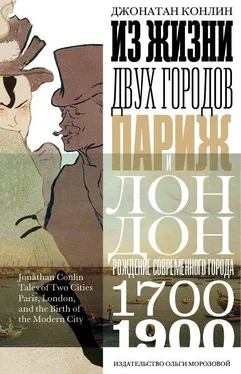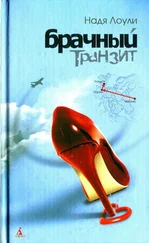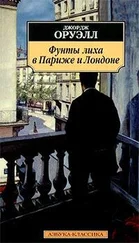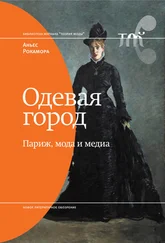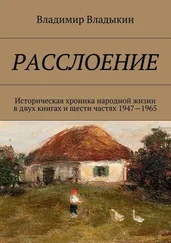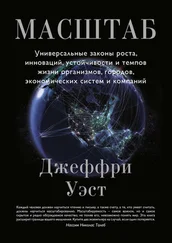David Garrioch, ‘House names, shop signs and social organization in Western European cities, 1500–1900’, Urban History, 21 (1994), 20–48.
Eric Hazan, L’Invention du Paris: il n’y a pas des pas perdus (Paris: Seuil, 2002).
Bernard Landau, Claire Monod and Evelyne Lohr (eds), Les Grand Boulevards: un parcours d’innovation et de modernité (Paris: AAVP [n.d.]).
Tim Hitchcock, Down and Out in Eighteenth-Century London (London: Continuum, 2007).
Tim Hitchcock and Heather Shore (eds), The Streets of London: From the Great Fire to the Great Stink (London: Rivers Oram, 2003).
Jacques-Louis Ménétra, Journal of My Life (New York: Columbia University Press, 1986).
Kathryn A. Morrison, English Shops and Shopping: An Architectural History (New Haven: Yale University Press, 2003).
Lynda Nead, Victorian Babylon: People, Streets and Images in Nineteenth-Century London (New Haven: Yale University Press, 2000).
Jane Rendell, The Pursuit of Pleasure: Gender, Space and Architecture in Regency London (London: Athlone, 2002).
Daniel Roche, The People of Paris: An Essay in Popular Culture in the Eighteenth Century, trans. Marie Evans (New York: Berg, 1987).
Margaret Rose, Flaneurs and Idlers (Bielefeld: Aisthesis, 2007).
Laurent Turcot, Le Promeneur à Paris (Paris: Gallimard, 2007).
Глава 3. Ресторан
Существует несколько биографий Гримо (Grimod) и Брилья-Саварин (Brillat-Savarin), а также Алексиса Суайе, и несколько переводов таких произведений, таких как «Физиология вкуса» (La Physiologie du Goût) — их легко достать. Как ни странно, на французском языке мало научной литературы по истории гастрономии; здесь могут быть полезны работы таких писателей, как Роберт Куртин. Меннелл приводит отличный сравнительный анализ ресторанов, охватывающий широкий ряд тем. Работы Спанга и Мецнера более сфокусированы, но тоже превосходны.
Jean-Paul Aron, The Art of Eating in France: Manners and Menus in the Nine teenth Century (London: Peter Owen, 1975).
Alan Borg, A History of the Worshipful Company of Cooks of London (London: privately printed, 2011).
Tomas Brennan, Public Drinking and Popular Culture in Eighteenth-Century Paris (Princeton: Princeton University Press, 1988).
Alberto Capatti et al., À Table au XIXe siècle (Paris: Flammarion, 2001).
Robert Courtine, La vie parisienne: Cafés et restaurants des boulevards (1814–1914) (Paris: Perrin, 1984).
Edwina Ehrman et al., London Eats Out: 500 Years of Capital Dining (London: Museum of London, 1999).
Stephen Mennell, All Manners of Food: Eating and Taste in England and France from the Middle Ages to the Present, 2nd edn (Chicago: University of Illinois Press, 1996).
Paul Metzner, Crescendo of the Virtuoso: Spectacle, Skill, and Self-Promotion in Paris during the Age of Revolution (Berkeley: University of California Press, 1998).
Erika Rappaport, Shopping for Pleasure: Women in the Making of London’s West End (Princeton: Princeton University Press, 2000).
Rachel Rich, Bourgeois Consumption: Food, Space and Identity in London and Paris, 1850–1914 (Manchester: Manchester University Press, 2011).
[Ralph Rylance], The Epicure’s Almanack [1815], ed. Janet Ing Freeman (London: British Museum, 2012).
Rebecca Spang, The Invention of the Restaurant: Paris and Modern Gastronomic Culture (Cambridge, Mass.: Harvard University Press, 2000).
Глава 4. Танец
В архивах Вестминстера и Ламбета, музея Карнавале и Национальной библиотеки Франции хранится множество плакатов, программ и фотографий, сделанных во время представлений в мюзик-холлах и музыкальных залах, а также изображений отдельных исполнителей. В то время как история лондонских мюзик-холлов довольно хорошо изучена, хорошие книги о садах развлечения «Воксхолл», guinguettes и bals publics очень трудно найти. Перечисленные ниже работы являются наиболее достоверными; а труды Гacно, Ланглуа и Скотта — просто отличные.
J. S. Bratton (ed.), Music Hall: Performance and Style (Milton Keynes: Open University, 1986).
Rae Beth Gordon, Why the French Love Jerry Lewis: From Cabaret to Early Cinema (Stanford: Stanford University Press, 2001).
François Brunet, Téophile Gautier et la danse (Paris: Honoré Champion, 2010).
François Caradec and Alain Weill, Le Café Concert, 1848–1914 (Paris: Arhème Fayard, 2007).
Jean Castarede, Le Moulin Rouge (Paris: France-Empire, 2001).
Philippe Chauveau and André Sallé, Music-hall et café-concert (Paris: Bordas, 1985).
Rupert Christiansen, The Visitors: Culture Shock in Nineteenth-Century Britain (London: Chatto and Windus, 2000).
Jonathan Conlin, ‘Vauxhall on the boulevard: pleasure gardens in Paris and London, 1759–89’, Urban History, 35: 1 (May 2008).
Barry J. Faulk, Music Hall and Modernity: The Late-Victorian Discovery of Popular Culture (Athens: Ohio University Press, 2004).
Jacques Fescotte, Histoire du Music-Hall (Paris: PUF, 1965).
J. E. Crawford Flitch, Modern Dancing and Dancers (London: Grant Richards, 1912).
François Gasnault, Guinguettes et Lorettes: bals publics et dans social à Paris entre 1830 et 1870 (Paris: Aubier, 1986).
Dagmar Kif, The Victorian Music Hall: Culture, Class and Conflict, trans. Roy Kift (Cambridge: Cambridge University Press, 1996).
Gilles-Antoine Langlois, Folies, Tivolis et Attractions: les premiers parc de loisirs parisiens (Paris: Action Artistique de la Ville de Paris, 1991).
Raoul Muriand, Les Folies Bergères (Sèvres: La Sirène, 1994).
Claire Parftt, ‘Capturing the cancan: body politics from the Enlightenment to postmodernity’, PhD diss., University of Surrey, 2008.
David Price, Cancan! (London: Cygnus Arts, 1998).
Derek B. Scott, Sounds of the Metropolis: Te Nineteenth-Century Popular Music Revolution in London, New York, Paris and Vienna (Oxford: Oxford University Press, 2008).
Jerrold Seigel, Bohemian Paris: Culture, Politics, and the Boundaries of Bourgeois Life, 1830–1930 (Baltimore: Johns Hopkins University Press, 1986).
Nicole Wild, Dictionnaire des théatres Parisiens au XIX siècles (Paris: Amateurs de Livres, 1989).
Глава 5. Темная сторона
История освоения ночного города в восемнадцатом и девятнадцатом веках до сих пор не рассказана никем, ученые по какой-то причине игнорировали эту тему (кроме Шифельбуша). Козловски и Кабанту предложили полезные модели. Битти и Эмсли являются наиболее авторитетными исследователями истории британской преступности и правопорядка; в некоторых работах последнего приводятся сравнения между Лондоном и Парижем. Биографии Видока содержат в основном лишь комментарии к его мемуарам: последние доступны в английском переводе (Edinburgh, AK Press). Исследований истории появления и развития детективного жанра так много, что мы перечислили здесь лишь самые известные и надежные источники.
Читать дальше
Конец ознакомительного отрывка
Купить книгу
